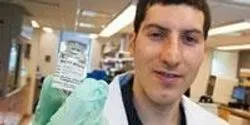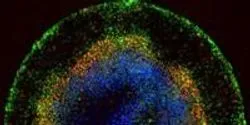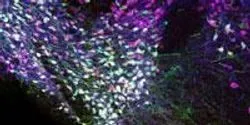All by The Rockefeller University
Filter by
AllArticlesAudioEbooksEventsInfographicsNewsProductsSurveysDocumentsVideosVirtual EventsWebinars
When they are not busy attacking us, germs go after each other. But when viruses invade bacteria, it doesn’t always spell disaster for the infected microbes: Sometimes viruses actually carry helpful genes that a bacterium can harness to, say, expand its diet or better attack its own hosts.

Some people take stress in stride; others are done in by it. New research at Rockefeller University has identified the molecular mechanisms of this so-called stress gap in mice with very similar genetic backgrounds — a finding that could lead researchers to better understand the development of psychiatric disorders such as anxiety and depression.

Even the most careful chosen meal can contain surprises. To defend against infectious microbes, viruses or other potential hazards that find their way to the intestines, a dedicated contingent of immune cells keeps watch within the thin layer of tissue that divides the contents of the gut from the body itself.

Although HIV can now be effectively suppressed using anti-retroviral drugs, it still comes surging back the moment the flow of drugs is stopped. Latent reservoirs of HIV-infected cells, invisible to the body’s immune system and unreachable by pharmaceuticals, ensure that the infection will rebound after therapy is terminated.

Human cells make new copies of their DNA billions of times each day, a crucial process upon which life itself depends. However, scientists do not fully understand how cells unzip the double-stranded DNA molecule before replicating both halves of it. New work at Rockefeller may help change that.

About seven days after conception, something remarkable occurs in the clump of cells that will eventually become a new human being. They start to specialize. They take on characteristics that begin to hint at their ultimate fate as part of the skin, brain, muscle or any of the roughly 200 cell types that exist in people, and they start to form distinct layers.

When it comes to the brain, wiring isn’t everything. Although neurobiologists often talk in electrical metaphors, the reality is that the brain is not nearly as simple as a series of wires and circuits. Unlike their copper counterparts, neurons can behave differently depending on the situation.

Microbes are not only a rich source of disease, but also a rich source of medicines, and experts think many life-saving compounds produced by as-yet-unnamed bacteria are awaiting discovery. But they don’t always give up their secrets easily. Researchers must know where to look to find promising bacteria, and how to get them to grow in the lab, the traditional route to identifying potentially valuable molecules they produce.













